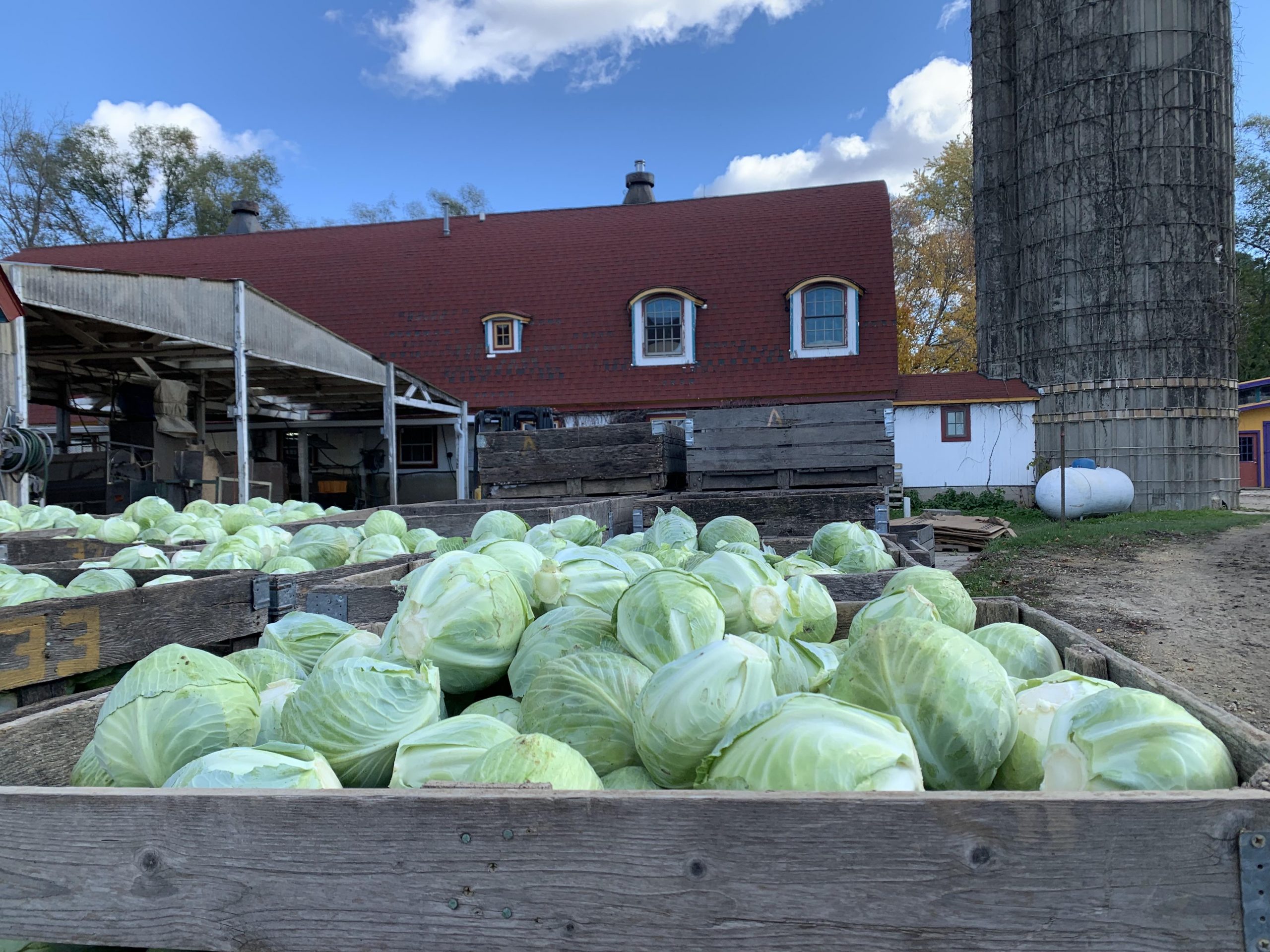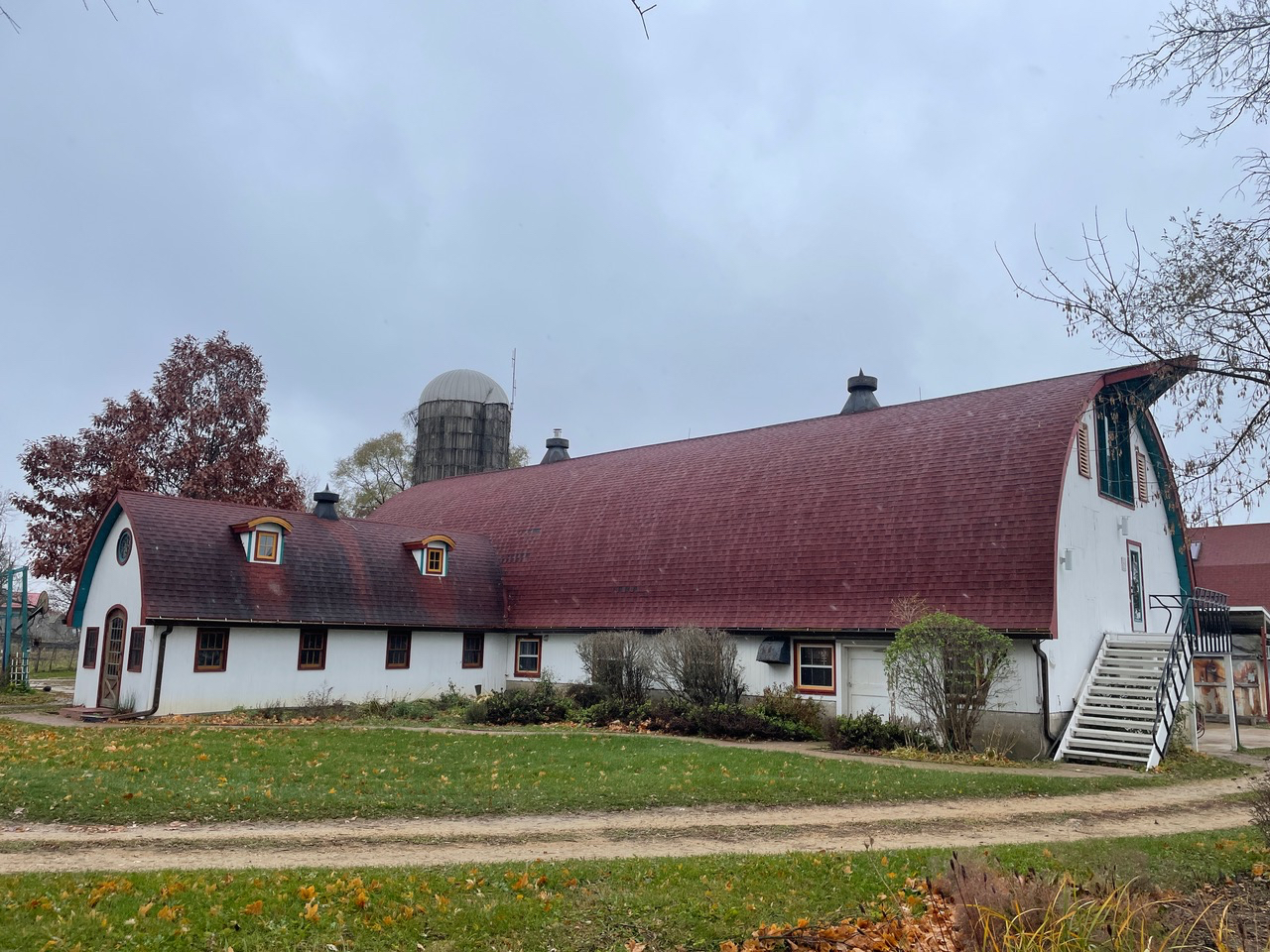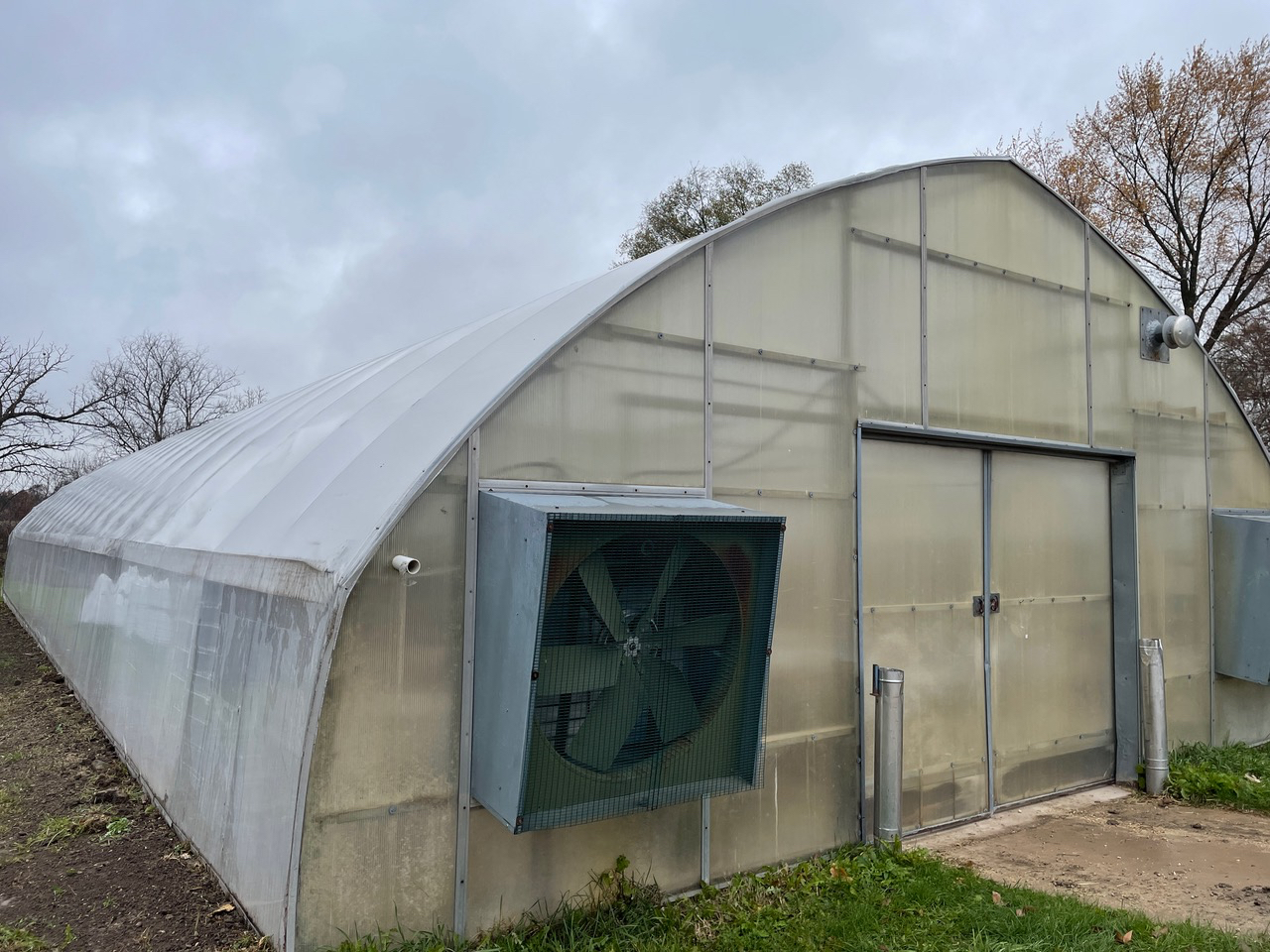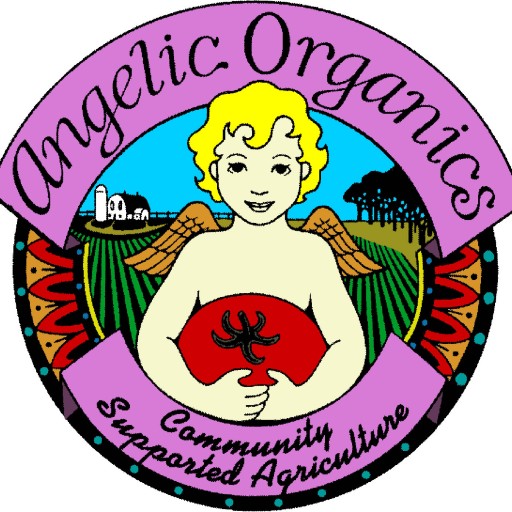Farmer John Writes: Like a Dream that Won’t Form
Extended Season Week 1, November 15th – 20th, 2021
Our 20-week main season is now complete. This is the first week of our extended season. Only those shareholders who are signed up for an extended season share have deliveries left this season. If you are unsure of your delivery schedule for the rest of the season, please log in to your membership account to view your delivery calendar.

I notice that this issue of Farm News somehow segues from weather to farm design. So be it.
Weather dramatically impacts harvest activities as we near the end of the season. The frosts make early morning harvests awkward, because the crops that have survived the cold, such as kale and cabbage, are rather like leafy sheets of steel and cannon balls, respectively. And, of course, the field crew, depending, experiences numbness in the feet and hands and frigid cold further within their bodies. When I say depending, I mean that some of our H-2A guests from Mexico who have chosen to brave the work until the end of the season are poorly equipped to deal with the cold. Instructing them on the importance of keeping their feet warm might sound to them like the words of an overly-protective parent, as they stare at me, shuffling, shivering, rubbing their stomachs and chests briskly to ward off the cold. (Yes, we offer warm winterwear to the crew and insist that they wear it.)
Of course, there is a psychological component in one’s tolerance for cold. Victor and Pollo, both of whom hail from Mexico, stay warm. I felt Victor’s ungloved hands recently after he came in from the field on a frigid day; his hands seemed like they were fresh out of the warming oven.
This fall, with the heaps of harvest work and a smaller crew than usual, we have still managed to provide some overdue structural care to the greenhouse. That’s in addition to the massive amount of upgrades (about $50,000 worth) we did on it in early spring described in a March edition of Farm News, The Thaw, My Sister, and Your Share.
We built the greenhouse 25 years ago. The water cascading down the arched roof and pooling at the base over the years eventually rotted out the boards that serve as the seal to the ground. This past week, Pollo and Bartolo replaced those decayed boards that were embedded in the ground with long-lasting yellow pine, tongue and groove 2×6’s. Then it rained. Then it froze. We would not have been able to get to the job if we had waited a day longer. I had been wanting to do this project for years—but how to fit it in amongst all the other farm busyness during the unfrozen part of the season? Sometimes, we just make things happen, no matter what.
I must add here that, given that Pollo was in charge of the project, it would for sure be done in a timely and effective fashion. I featured Pollo in Week 10 Farm News, The Wrong Kiss. One of his more mystical qualities is that I usually only need to nod at a project, maybe discuss it briefly with him, and he already knows exactly how to do it. It’s almost as if the project is already done in the future and he just has to go through the motions to manifest that already realized future.

Pollo and Bartolo replace the baseboards of the greenhouse before the rain, the snow and the hard frost
The next step is to replace the double poly liner that spans the roof: that’s a challenging, weather-sensitive process. The day has to be very calm to drape the 86 ft x 40 ft double liner over the arched rafters and then secure it. If a wind comes up, what might normally take 6 hours can take an extra day or two. The slightest wind turns the liner into a giant, billowing kite. Years ago, I tried to hold the liner down to the ground against a breeze. It took me airborne–just a few feet upwards before I let go. I sometimes wonder how far it would have hoisted me to the sky if I had hung on.
These poly liners last three to five years. Then they begin to crack and let out the expensive heated air. The loss of heat will probably be more expensive this coming spring than ever before, given the increases in costs for the lp gas we use for heating it.
When I chose the greenhouse’s 30 ft x 84 ft dimensions in the mid-90’s, I made sure that it would not exceed the 32 x 88 dimensions of our main barn. It didn’t seem right to give the greenhouse a greater stature than the magnificent arched barn that graces our farmstead.

the main barn, 32 x 88
I did choose a form for the greenhouse, however, that echoed the arched form of our main barn, the milkhouse, our corn crib (now office) and the charming cupola that sits on top of the corn crib.
In relation to the lovely, classic buildings that populate the rest of the farmstead, the greenhouse is conspicuously gray and filmy, like a dream that won’t form. I plan to mitigate this drabness, even if it is only through a gesture, perhaps just a strategically placed streak of color that lets the other buildings know it’s on the same team as them. I want my buildings to be relational.

the gray greenhouse, 30 x 84
For me, the worst aspect of modern architecture is the garish individuality of the structures and the lack of relationship to the nearby edifices. (Most verbal communication is done similarly today, without cohesion, without connectedness, without relationship.) I want all of my buildings to feel like they can talk to one another; intruding and narcissistic forms and colors are unwelcome. The discreet individuality of each farm building here needs to illuminate, not dwarf, the individuality of its neighboring buildings.

the arched corn crib office and cupola (foreground) communicates with the farmhouse (right) and garage (left)
The farm buildings at Angelic Organics are temples to agriculture: a constellation of designs that comprise an enduring tribute to the workings of this farm. I tend these buildings in a way that is mindful of their agrarian and cultural past, and mindful of their agrarian and cultural future. They are a major part of my life’s work. They are my retrospective—my way through the past– and they are my prospective—my way into the future.
The methods that guide my design process for the farmstead are a bit mysterious to me. Perhaps I will elaborate on them in the next issue of Farm News, since this world that we inhabit is very visual and tactile and has a powerful impact on how we experience life. This is especially true of the built environment.
Overheard
Musician: I want to sing your buildings.
Farmer John: Sing to them?
Musician: Sing them. Put them to song.
Warmly,
Farmer John




Your comments about the interconnectedness of the farm buildings and nature touches my heart. We need the wholesome, gentle nature that is visible and touchable in this world.
Thank you for bringing this to us.
My farm buildings are my friends, long-term friends. Well, maybe they are my children, what with all their needs–beloved children.